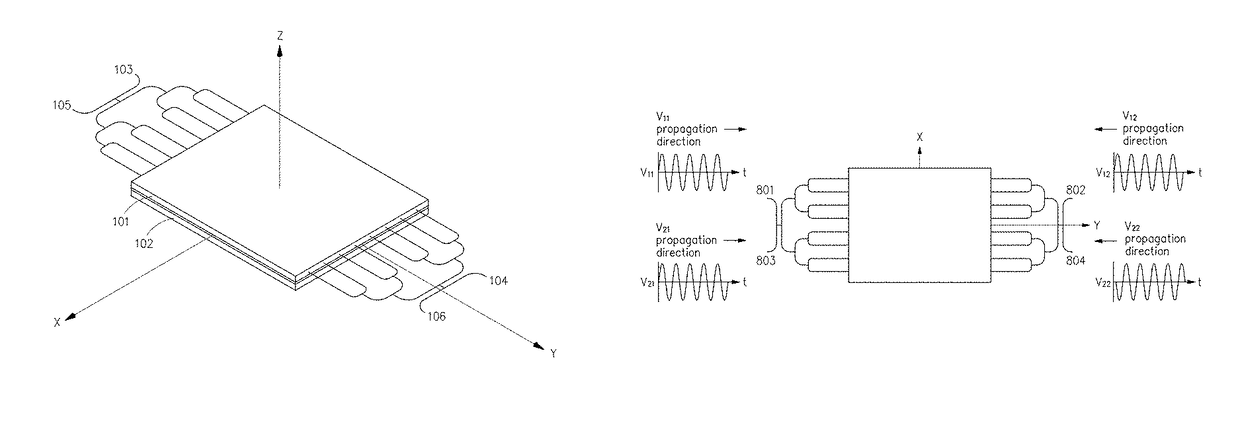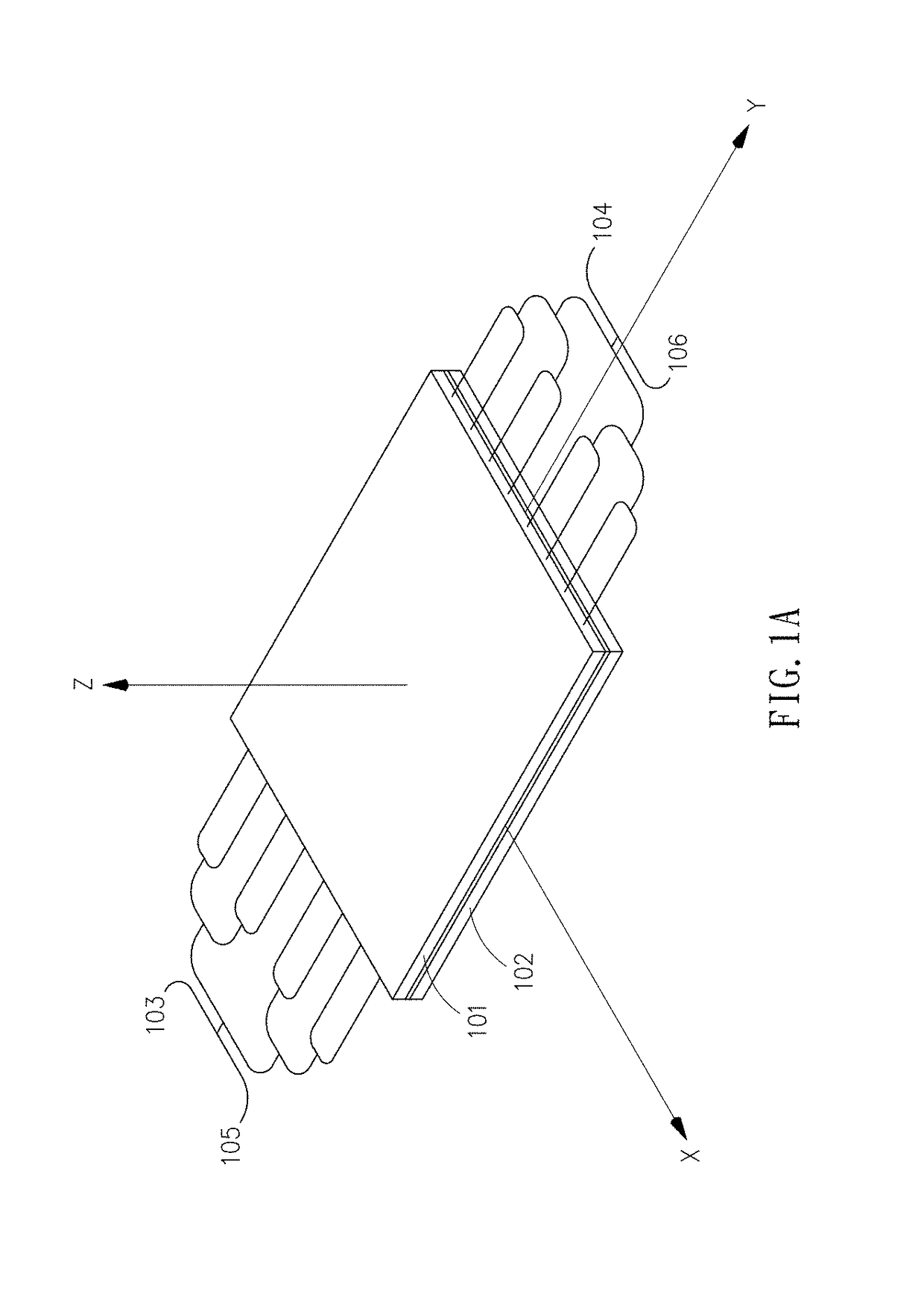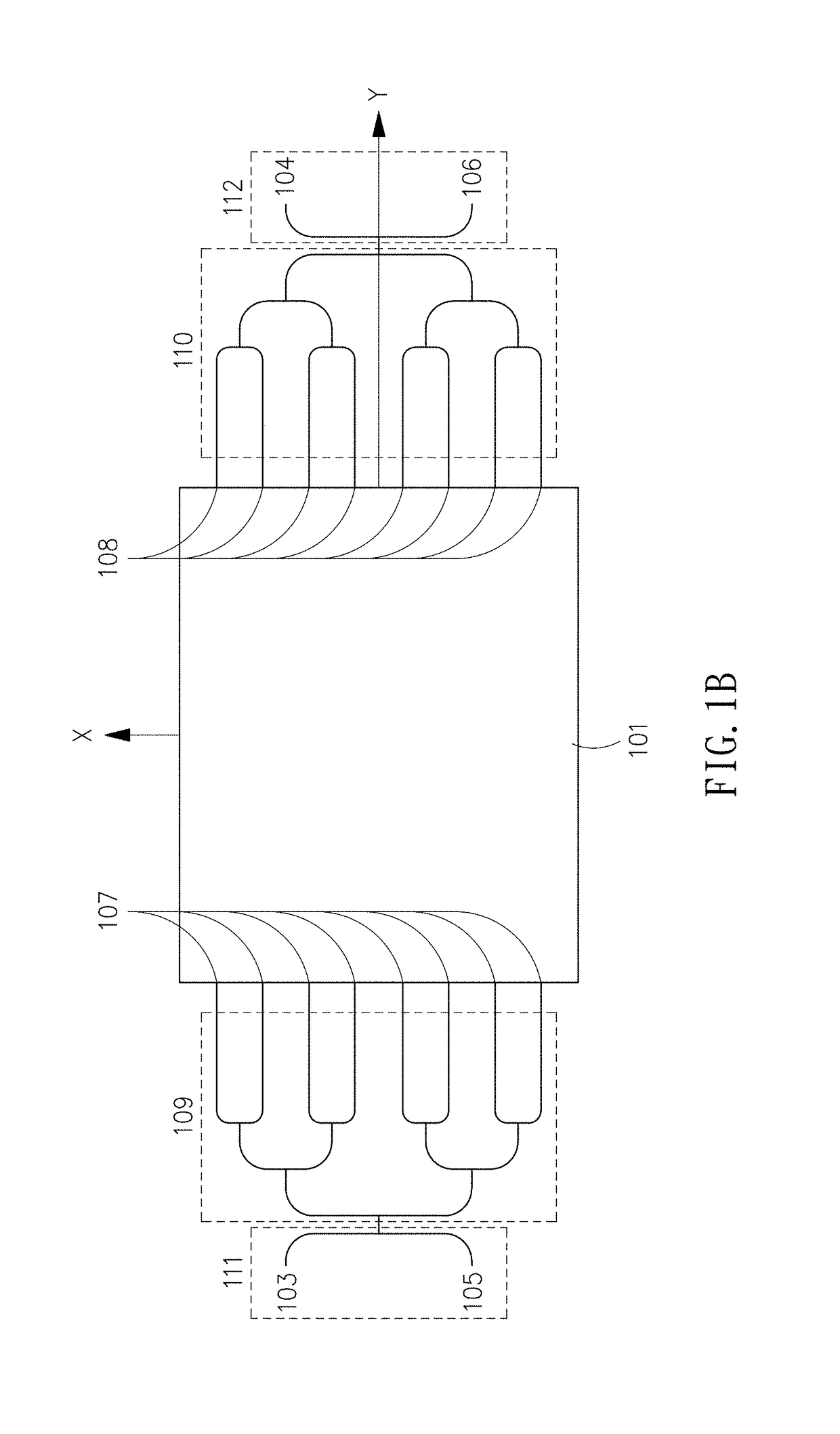Apparatus of high frequency plasma
- Summary
- Abstract
- Description
- Claims
- Application Information
AI Technical Summary
Benefits of technology
Problems solved by technology
Method used
Image
Examples
Embodiment Construction
[0033]The invention disclosed herein is directed to an apparatus of high frequency plasma. In the following description, numerous details are set forth in order to provide a thorough understanding of the present invention. It will be appreciated by one skilled in the art that variations of these specific details are possible while still achieving the results of the present invention. In other instance, well-known components are not described in detail in order not to unnecessarily obscure the present invention.
[0034]Refer now to FIG. 1A and FIG. 1B; where FIG. 1A is a schematic view of an embodiment of the high frequency plasma apparatus in accordance with the present invention, and FIG. 1B is a top view of the first electrode of FIG. 1A.
[0035]As shown in FIG. 1A and FIG. 1B, this embodiment includes a first electrode 101, a second electrode 102, a plurality of feed points 103˜108, two power dividers 109, 110 and two power combiners 111, 112.
[0036]Referring now to FIG. 1A, the first...
PUM
 Login to View More
Login to View More Abstract
Description
Claims
Application Information
 Login to View More
Login to View More - R&D
- Intellectual Property
- Life Sciences
- Materials
- Tech Scout
- Unparalleled Data Quality
- Higher Quality Content
- 60% Fewer Hallucinations
Browse by: Latest US Patents, China's latest patents, Technical Efficacy Thesaurus, Application Domain, Technology Topic, Popular Technical Reports.
© 2025 PatSnap. All rights reserved.Legal|Privacy policy|Modern Slavery Act Transparency Statement|Sitemap|About US| Contact US: help@patsnap.com



